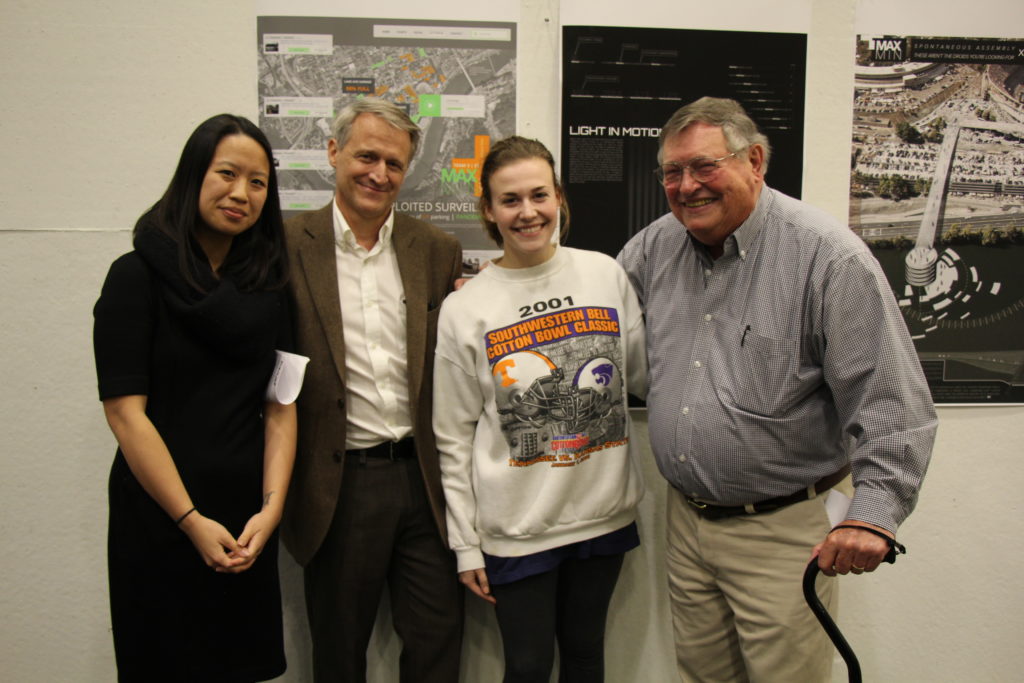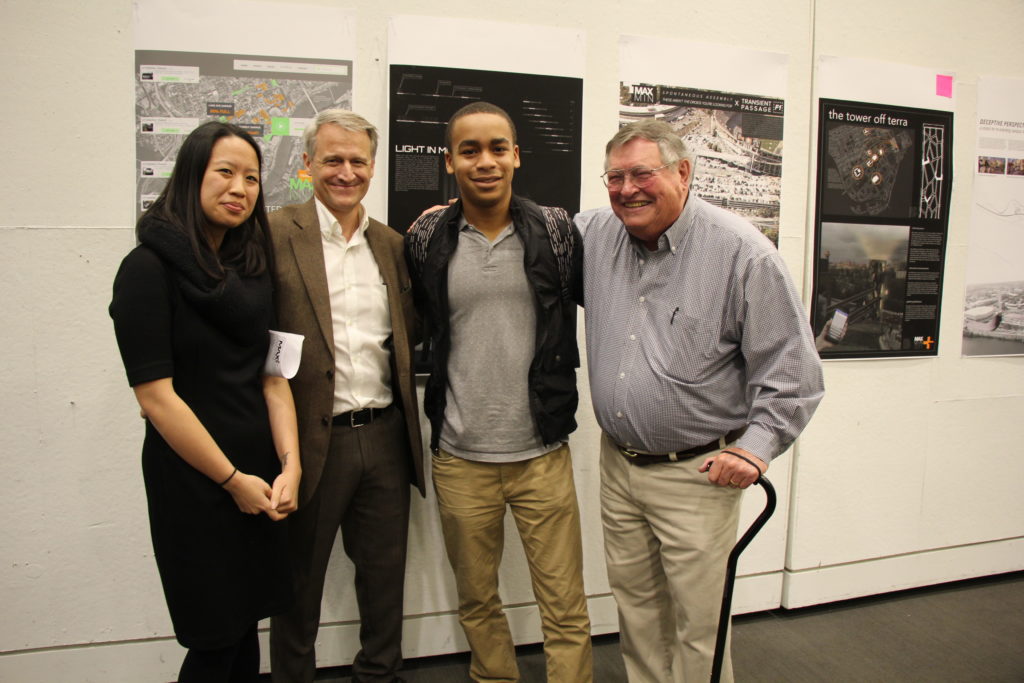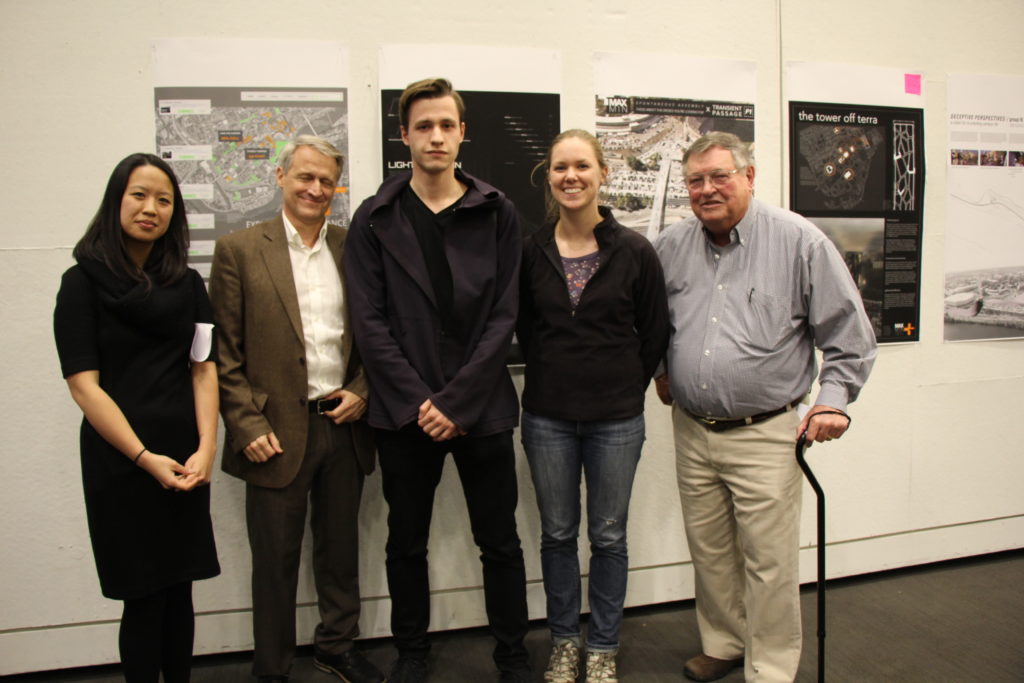January 23, 2017 MAX-min Competition Gives Students Chance to Reimagine UT Campus

The 2017 MAX_min student design competition, an annual event that gives students from all three schools the chance to join together in intense design thinking, ended in celebration as students shared design concepts and celebrated the winning teams.

On Jan. 20, after five days of collaboration, students gathered to hear the jury’s feedback and final decision. The first-place team made up of Estaban Pilo-Pais, Daniel Byrd, Sam Sowell and Jonathan Winfiele, designed an app to navigate UT parking. The team received a $1,000 prize.
Second place went to Catherine Dozier, Jennifer Nicklas, Major Morgan and Brittany Kirby. A tie for third place went to the team of Kailey Fontan, Piotr Lewicki and Sarah Newton and the team of Jada Cotton, Gray Taylor and Andrew Tarsi. Two honorable mentions were given to Anthony Dienst, Olivia Moore, Maggie Redding, Armand Nasab, Parth Patel and Zherti Jasa as well as the team of Taylor Harrell, Jenn Elder, Rachel Elbon and Kenny Townsend.
The 2017 theme was “New Campus Freedoms,” and student teams were asked to reimagine the built environment of the UT campus. As the campus continues to grow and transform, the MAX_min competition served as an opportunity for students to envision its potential, proposing concepts that supplement and even subvert current designs.
The college salutes the jury for the 2017 MAX_min competition:
- Ann Lui, principal of FUTURE FIRM, Chicago, and assistant professor, Art Institute of Chicago
- Andy Powers, director of design, UT Facilities Services
- Max Robinson, former director and emeritus professor, UT School of Architecture
Established and named in honor of the School of Architecture’s former director, Max Robinson, the MAX_minimum Design Competition is a recurring annual competition meant to encourage the greatest impact on the design environment with the least possible means. The aim of the student projects is to leverage the potential of design thinking to creatively impact the College of Architecture and Design, the University of Tennessee, Knoxville, and the state of Tennessee. First amongst the project goals is the development of conceptual and pragmatic design excellence within the College of Architecture and Design’s student body.






